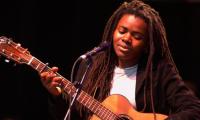The revival of student unions has been a matter of serious concern since the ban imposed on them in 1984. This apprehension mainly stems from the narrative that student unions lead to violence on campuses. The objection against unions is that certain groups intimidate ‘neutral’ students and engage in violence.
But before making any sweeping statement, one must address several questions: what exactly do student organisations achieve from all this gore? What is the role of the state in all this?
While there is no denying that violence on campus is an attempt to show power, it must be emphasised that this lust for power does not emerge from a vacuum but comes directly from society.
Two models of violence have existed parallel to each other in the history of Pakistan. One model was applied in urban political institutions where students had unions which were a critical hub of dialogue and debate about the narrative of the federation, its ideology, international politics etc. The other model existed in the periphery in Balochistan, Khyber Pakhtunkhwa and Sindh.
The first of these models of violence was unleashed on universities where students had leftist tendencies and a diverse, urbanised milieu. This was done through proxy student groups during the 1980s when the Afghan war was at its zenith. With the cold war on the international front, Pakistan policymakers were simply not ready to deal with any dissent on the local level, so any group which seemed to align with the state’s policy was supported, and students against wars had to deal with state-sponsored student organisations instead of wrangling directly with the state. The second model was more horrific – the state itself began to ‘deal’ with any dissent that it came across.
But was this dissent unique to the cold-war era? No. Tensions had started from the very inception of Pakistan. The idea of this newborn state had not been decided, and its leaders had no clue about it whatsoever. Even today, the state’s narrative is remarkably similar to that which was promoted during the country’s infancy: one national identity in one territory.
Pakistan’s intelligentsia has invested billions of rupees and endless brainpower to negate the existence of indigenous languages, culture, religions and nationalities to strengthen the writ of the state. For that, they have shaped a curriculum that identifies a false version of extremely right-wing Muslims and brutal warlords as the symbol of the unification of diverse societies.
Meanwhile, two different parts of the country were burning in different fires, each isolated from the other. The middle class and Karachi’s educated youth challenged the state in one way. Leaders of Balochistan did in another. What did the state do?
First, it tried to counter the students of the DSF in Karachi by directly igniting violence upon students of DJ College in 1953. Nine students were killed. But this was just a test to see if force would prove effective in eradicating dissent. It did not – in Karachi. The direct violence model failed in the urban middle-class population and the state had to face severe backlash. Today, this model is exercised upon Baloch, Pashtun and Sindhi students.
During Ayub Khan's reign, the One Unit scheme was imposed and the national structure of provinces was abolished by the state. However, the more the state repressed national identities, the more nationalists were mobilised and came to the foreground.
A number of nationalist student organisations emerged during the late 1960s. Once more the state attempted to make a strong and unified federation but failed. Ayub was thrown out by students of NSF and Sindhi nationalists. Some years after that, Yahya Khan targeted students and intellectuals of Bangladesh.
Dhaka and the students of Dhaka University were the main targets of these operations because they rejected the narrative that the intelligentsia had been trying to impose since the 40s. They rejected Urdu as the sole national language, rejected their exploitation in federal budgets, and rejected the way their indigenous culture was not recognised. And eventually Bangladesh was born.
The late 70s and 80s were different times. The Afghan Jihad had started and the abundance of ammunition in Pakistan led to horrific bloodshed. The Afghan Mujahideen were fighting against the pro-Soviet Noor Mohammad Tarakai and Babrak Karmal on the payroll of the US while Pakistan provided bases to Americans for training and funding the Mujahideen.
In Pakistan, campuses were dominated by the pro-Soviet student group National Student Federation (NSF) and its opponent Islami Jamiat Talba – the student wing of the Jamaat-e-Islami, which fully supported Pakistan’s participation in the Afghan war. At the time, Zia wanted to curb any dissent erupting from socialist or nationalist organisations. For him, in the time of war, society had to be on the same page.
The NSF was against war and was allied with nationalist organisations that were contesting Pakistan’s decisions to participate in the war. So, when the NSF won the last student union elections in Dow Medical College in 1983, defeating the Jamiat, Zia banned student unions. The state then sought to use students as proxies to initiate violence upon those who challenged its writ and decision. Guns were supplied freely to students and campuses became battlefields.
The idea is that the violence that student unions are accused of promoting and fostering is not inherent to these unions – violence was imported into campuses.
Since the late 70s, there has been a war of proxies on campuses across the country and it is the state that is responsible for this. Whichever political party comes to power in Pakistan, its student group imposes its narrative on the campus through bigoted literature or violence. These groups consider themselves beyond the law and work only to impose their version of right and wrong. Some believe that people should only call themselves Pakistanis or Muslims and disregard their ethnic heritage; others insist on converse.
Regardless of who says what, the war that everyone fears to see on campuses is funded from the outside. Students and their unions were never violent until they were made so by external forces with ulterior motives.
It is imperative to break the myth of violence surrounding student unions. These unions are, after all, not merely only for those on campus, but for society in general. They foster a culture of dialogue and debate – which is the only way to actually curb aggression. Paulo Freire writes in ‘The Pedagogy of the Oppressed’ that “Dialogue is the encounter between men and women, mediated by the world, to name the world. Hence, dialogue cannot occur between those who want to name the world and those who do not wish this naming”.
The suffocation that has been created by the state intelligentsia to suppress the idea of a multinational diverse society and to bestow upon it a homogenous, artificial identity must be changed. Students must be allowed to find spaces to share their ideas and respect their identities and ideologies. This is the only way out of Pakistan’s many crises.
The writer is an Mphil scholar, and president of the Progressive Students Federation, Karachi. He tweets @WaqasAalam
Beijing was among first to denounce the tariffs, calling them “unjustifiable” and vowing strong countermeasures
With this unprecedented buildup, Diego Garcia has transformed into ticking time bomb of apocalyptic power
Pakistan is among world’s most climate-vulnerable nations, despite contributing minimally to global emissions
‘Azazeel’ is perhaps the most controversial novel to come out in Egypt this century
Dr Haroon Ahmed was an exceptional person, a precious human being who strived, throughout his long life
Pakistan can't afford another status quo budget so it must be budget of imagination, risk-taking and system-level...







